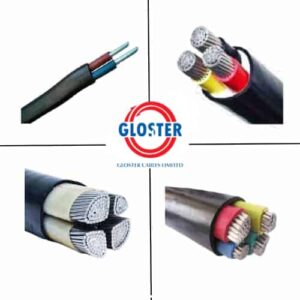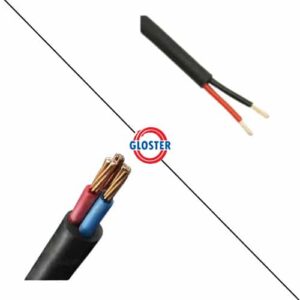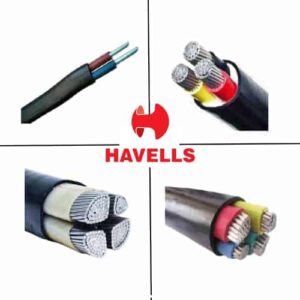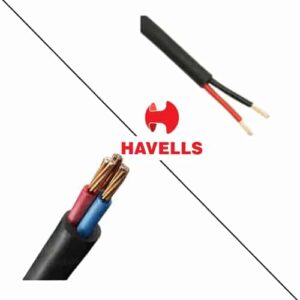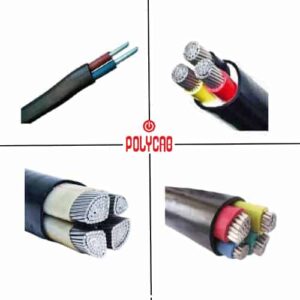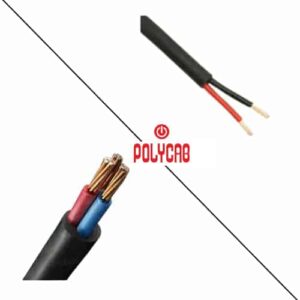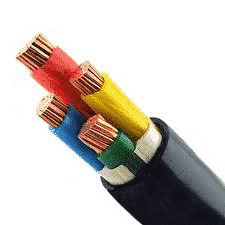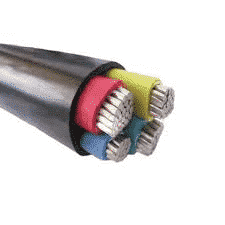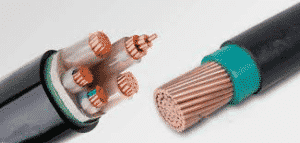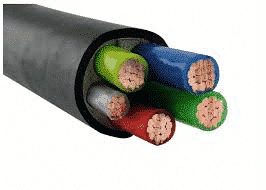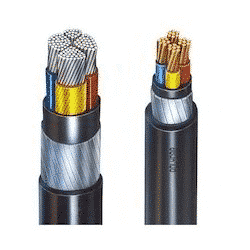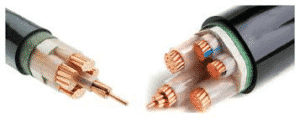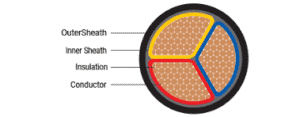Gloster Unarmoured Aluminium LT Cable PVC/XLPE Insulated Overall PVC Sheathed 1100 Volts
₹22.95 - ₹6,750Gloster Unarmoured Copper LT Cable PVC Insulated Overall PVC Sheathed 1100 Volts
₹25.65 - ₹321.75Havells Unarmoured Aluminium LT Cable PVC/XLPE Insulated Overall PVC Sheathed 1100 Volts
₹22.95 - ₹6,750Havells Unarmoured Copper LT Cable PVC Insulated Overall PVC Sheathed 1100 Volts
₹25.65 - ₹321.75Polycab Unarmoured Aluminium LT Cable PVC/XLPE Insulated Overall PVC Sheathed 1100 Volts
₹22.95 - ₹6,750Polycab Unarmoured Copper LT Cable PVC Insulated Overall PVC Sheathed 1100 Volts
₹25.65 - ₹321.75Why Buy Unarmoured Wires & Cables?
An unarmoured cable is two or more wires twisted together and running together side by side as a single assembly. It doesn’t consist of a protection layer (like in armoured one). Unarmoured cables are not provided with armouring.
It is also known as optical cable. If ever you have seen people installing fiber-optic wires and cables, that is what you are looking for. The main difference between a standard Huadong steel wire armoured wire cable and this type of cable wire is that it does not have that final layer of outer protection.
Other than that, they are different with respect to the type of wiring that is inside, and how many different cores it uses.
Unarmoured cable is less expensive to produce, primarily because the exterior level, which could be made of a material like Kevlar (a synthetic fiber of high tensile strength used especially as a reinforcing agent in the manufacture of tires and other rubber products) but is not going to be used on the cables and wires as they have no protective layer.
The construction of unarmoured cables is the same as that of armoured cables.
Unarmoured cables also consist of all parts such as insulation, metallic sheath, and serving. With the changing scenario and development of optical communication, more use of optic fiber electric cable wire has come into the picture which is increasingly being used in the environment. But, what if the situations are not so favorable? What if the situations are harsh? Then it becomes a priority to ensure that the cable wire being used is smooth and the operation is reliable while data transmission takes place. At these moments Armoured cable has its use.
Armoured Cables and wires are used in places where there is potential exposure to mechanical damage. Armoured cables and wires are better to be used in fixing conduit pipes as they are able to support by transporting large volumes of water over large distances. Wiring done at places that pose a great danger to cables is a matter of concern and also their components, such as places with extreme weather conditions are likely to cause interference to the cables and wires presently used.
Difference Between Armoured Cable and Unarmoured Cable?
Many people have thought that Armoured cables just have metal protection, but to be more precise and accurate, there isn’t a need for the armouring material to be a metal, it could be a glass yarn, fiber yarn, polythene, etc. The basic thing that makes an armoured cable different from unarmoured cable is that the former has an extra layer for protection of optic cable wire, this additional protective layer makes the difference between the two categories i.e. Armoured and Unarmoured Cables.
Also, the 4 core cable (Armoured) is more expensive as compared to unarmoured cable, while armoured cable with strips made of aluminium or steel is much cheaper than armoured fiber cable wire with Kelvar which is used in cases of special occasions.
Applications of Armoured Cable:
Wires and cables that are of use in large industrial applications have a lot of challenges and issues at the time of transmission. Both the cables electrical and network are used over long distances which directly exposes them to a lot of mechanical threats. These cables are placed overhead or underground as per the requirement. But whatever the case be these types of cables are exposed to direct mechanical damage.
Armoured cables are capable of protecting the inner components of the cable being used. Actual transmission can also be used from getting damaged by several external factors and thus hindering the transmission. It provides a surety that both power and network are available for the desired applications and thereby also making armoured cables and wires a reliable way of transmission.
We now have cables that are particularly used for the mains grid, it is important that interference from the fellow cables are in the path of the transmission line. Only because of the amount of high power which is transmitted, use of armoured cables helps in providing insulation of transmission components from emitting interference. It also protects from being affected by interferences caused by neighboring cables and also appliances.
Why Should We Use Armoured Cable over Unarmoured Cable?
There are various reasons which prove that Armoured Cable should be used over Unarmoured Cable. The main reason is a strength because the armoured wire cable was used very prominently in past decades when the cable was directly buried in a very simple manner under dirt and not used through a conduit. In the present era, local municipalities require the conduits to be trenched before the network components are installed, thereby eliminating the use of unarmoured cable in most applications.
There is also a case where animals and rodents can attempt to chew the cables since the armour provides protection to cable from damage caused by animals or rodents in direct burial. The next reason why it would be used is its use in an RF signal.
Example:-
The most common cables are; Standard home electrical cable also known as Lumex meaning Non-Metallic Dry (indoor) cable with 90 degrees Centigrade combustion 
Other examples of non-armoured cable: telephone and Cable TV wires.
Uses:-
It is used for underground electrical systems, it’s typically for things like fibre optics as stated earlier.
Unarmoured electrical cable can be installed inside walls and at other protected locations. Unarmoured cable is mainly used in control systems.
Conclusion:
Unarmoured cables are composed of several or few sets of wires in each group. Each wire is insulated from another wire. The cable also has the characteristics of external information and internal electricity. There are various cable types such as signal cable, coaxial cable, high-temperature cable. Armoured cable is regarded as “a cable with strength” which is more hard and strong than the standard optical cable. With protection against physical damage without compromising functionality or flexibility within the fiber networks, in the cases, 4 core armoured cable comes up to be a perfect choice for hazardous environments.
 (+91) 7439 448 917
(+91) 7439 448 917 Cash on Delivery Available
Cash on Delivery Available



 Circuit Breakers
Circuit Breakers Power Distribution
Power Distribution Modular Switchboard
Modular Switchboard Wires & Cables
Wires & Cables















